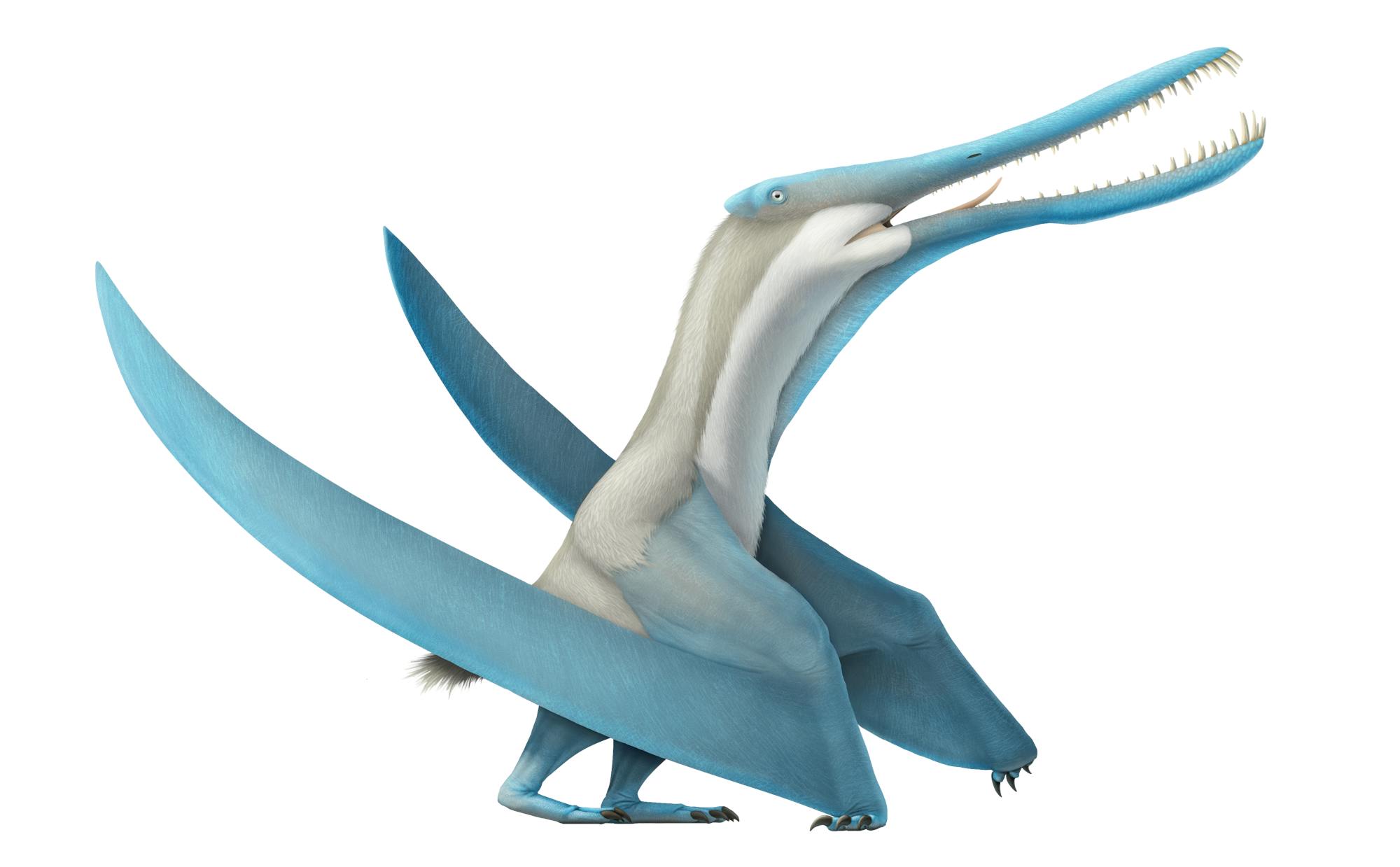


The Santana Formation in northeastern Brazil, deposited under the waves of the incipient Atlantic Ocean approximately 115 million years ago, is home to a huge number of pterosaur fossils. Barbosania gracilirostrus, named by Ross Elgin and Eberhard Frey in 2011, is one of several fish-eating pterosaurs known from the area.
Barbosania is based on a single well-preserved specimen made up of a nearly complete skull, most of the trunk and hips, and the majority of both wings and hind limbs. The skull is extremely long and narrow, measuring 39 cm (16 inches) in length. The skull lacks crests that are typical of some pterosaurs, but the top of the snout does bear a median ridge. Both the upper and lower jaw are lined with long, slightly curved teeth, with the longest teeth near the tips of the jaws.
The torso measures only about 30 cm (12 inches) long, but anchored the very long, robust forelimbs. Although the wings are incomplete, comparison to other similar pterosaurs shows that Barbosania's wingspan was about 2.3 meters (7.5 feet).
The long narrow snout lined with sharp teeth indicates that Barbosania was a fisher. The robust and narrow wings are similar to modern soaring birds, indicating that Barbosania likely fished while gliding over the open ocean.
Barbosania was initially described as an ornithocheirid by Elgin and Frey. Like Barbosania, other known ornithocheirds have long, narrow skulls lined with sharp teeth, as well as narrow and robust wings. Unlike Barbosania, many ornithocheirids, such as Ornithocheirus, have semi-circular crests on the tips of their jaws.
Ornithocheirids are closely related to similar fish-eating pterosaurs like the anhanguerids and istiodactylids, and the toothless nyctosaurids and pteranodontids. This lineage, known as the ornithocheiroids, is part of the short-tailed pterosaur group, the pterodactyloids, that came to dominate the skies in the Cretaceous.